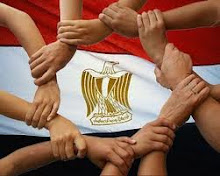Critics of contemporary globalization, mainly Marxists theorists, argue it is latest phase of Western imperialism and it is a tool used by the West to impose new form of hegemony disguised in economic, humanitarian and democratization projects to control the wealth and resources of the less advantaged countries outside a central triad (U.S., Western Europe, and Japan) which comprises only %20 of the world population but benefited the most from a system where globalization only applies to the developed world, as Balyis et al argue
Moreover, Samir Amin in 2001 contends that the ideological discourse of this new phase of imperialism is now founded on a “duty to intervene” that is supposedly justified by the defense of “democracy” the “rights of peoples” and “humanitarianism” but it is designed to ensure the West’s absolute hegemony by a show of military might that will consolidate behind it all the other partners in the triad (Samir Amin: Imperialism and globalization, Independent Socialist Magazine, Jun2001, Vol. 53, Issue 2, pp.10)
Alexander Anievas adds that the world since September 11 is witnessing return to an era of “inter-imperialist rivalries” especially after the U.S. invasion of Afghanistan and Iraq (Cambridge Review of International Affairs, volume 19, June 2006)
However, Ray Kiely in 2006 explains that the current era is one of greater openness and international integration than the pre-1914 era, and there is far greater cooperation between the core capitalist states, as well as sovereign states in the developing world (United States hegemony and globalization: what role for theories of imperialism?, Cambridge review, June 2006)
Those who consider globalization a triumph for the Western, market-led values across the world stop could not explain the economic success that some national economies in Asia like Malaysia, Taiwan, Singapore and Korea—known as Tigers’ of Asia—have had but meanwhile rejecting Western values.
Baylis et al argue that if these continue to follow their path towards modernization and economic prosperity while withstanding complete cultural take over by the West, then we must anticipate future disputes between “Western” and “Asian” values over issues like human rights, gender, and religion (Balyis et al, pp. 11)
To what extent can certain countries preserve their cultural identity, religious traditions and heritage in face of an enormous and merciless global economy and the tsunami of new ideas, values and technologies that fascinated people around the world— especially conservative nations across the Middle East and Asia—but meanwhile triggered fears of an imminent “clash of civilization” along geo-cultural fault lines as described by Huntington in 1996.
The September 11 attacks and the “Tigers of Asia” in addition to United Arab of Emirates, represent two competing examples of how the non-Western world might respond to globalization. While some countries and cultures were able to achieve economic success and progress and be part of global economy while adhering to its values and preserving its identity, on the other hand some of those in the Muslim world who rejected globalization as the latest stage of Western imperialism and hegemony undertook the attacks on the World Trade Center and the Pentagon which they considered the symbols of Western power and hegemony.
Mehdi Parvizi Amineh argues in 2007 that Huntington’s actual fault lines are socio-economic not geo-cultural, and that conflicts in today’s world do not take place between cultures but within them. Those societies that are more successful in adapting to the challenges of modernity show a relatively stronger capacity to cope with the growing complexity of political and cultural pluralism (The challenges of modernity: the case of political Islam, PGDT 6 (2007).
Friday, September 12, 2008
Subscribe to:
Post Comments (Atom)

No comments:
Post a Comment